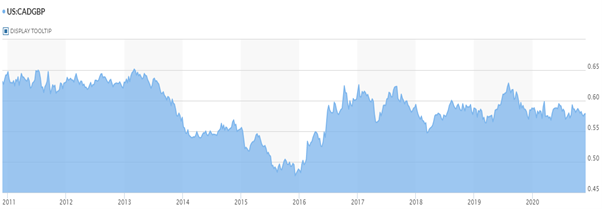 Author, Andrew Gibson
Author, Andrew Gibson
Last Updated on June 4th, 2024
Sending money abroad is not complicated once you understand the process.
I’ll explain how a transfer works, how long it takes, the information you will need, and the cheapest ways available.
How to transfer money abroad (in 4 simple steps)
Step 1 – Register as a client
All new clients need a basic ID check.
This is a legal requirement due to financial regulations.
It only needs to be done once.
For most people, the ID check can be quickly done using your name, address and passport number.
Step 2 – Lock-in an exchange rate
After you’ve registered, you can get your transfer underway.
Whenever you’re ready, your bank or money transfer company will quote you a current exchange rate.
Nothing will happen without your consent.
If you are happy to go ahead, your rate will be locked-in, and you will be emailed a confirmation with all the details of your transfer.
Step 3 – Pay for your transfer
Before any money is converted and transferred abroad, you need to pay for your transfer.
Your bank or money transfer company will provide you with the bank account details of where to send your money.
Banks require your money upfront. Money transfer companies normally give you 1-2 working days to send your money in.
Step 4 – Your money is converted and sent out
Once your money is received, your bank or money transfer company to convert your funds into the currency needed and transfer it to the bank account you’ve requested.
In practice, the whole process is usually quick and easy.

How long does it take to send money abroad?
The time taken depends on the destination country.
Within Europe, transfers are faster and typically take 1-2 working days. Outside the European Union, it can take 3-5 working days.
The reason it varies is largely due to the efficiency of the receiving bank.
Information you will need to send money abroad:
You will need to have the details of the recipient bank account (where to send the money):
- Account name
- Bank name
- Swift/BIC code
- Account number
You can get all this information by looking at a bank statement, logging into your account online or asking in a branch.
A money transfer specialist can assist you and help double-check the details before you transfer your money abroad.
Cheapest ways to send money abroad
To send money abroad, you can use either a bank or a money transfer company.
When making cost comparisons you need to consider both fees and the exchange rate.
A money transfer company is normally a cheaper way to send money abroad compared to a bank as the fees are lower and the exchange rates are more competitive.
The are many money transfer companies to choose from.
Some charge fees, while some don’t.
It depends on the amount you transfer.
The exchange rate also depends on how much you’re sending.
It makes direct comparisons difficult.
For smaller amounts, I would suggest using online apps such as PayPal, Transferwise, CurrencyFair and Revolut. If you are sending a larger amount, it makes better sense to use a money transfer service.
A money transfer service has some additional features compared to an online app.
Some services can monitor exchange rates for you and will help you set-up and check the payment details.
What’s more, they don’t have any daily transfer limits like the apps and can waive all the fees.
Compared: Banks vs Money Transfer Companies
| Pros | Cons | Best for | |
| Banks | Convenient and familiar | High fees & not the best exchange rates | Small one-off payments |
| Money Transfer Company | No fees, competitive exchange rates, personal service | Need to register before you can use | Large or regular amounts |
How much does it cost to send money abroad?
The big banks used to have the foreign exchange market to themselves.
Now there are alternatives available – often much cheaper.
Our research found that the ‘big four’ UK banks typically charge 3% to 5% when you transfer money abroad.
The exact cost varies depending on the amount you are sending.
As money transfer companies have far lower overheads, they can reduce the charges.
The overall charges can be 60% to 70% less using a money transfer company.
Watch out for annoying transfer fees
Most of the big banks charge a flat fee every time you transfer money abroad.
The transfer fee varies from bank to bank but is in the region of £10-£25 per transfer.
These fees are in addition to the money made from the exchange rate.
Some money transfer companies also charge transfer fees.
Others, such as ourselves, are happy to waive them altogether.
Daily payment limits
If you plan to send a large amount of money abroad, be aware that banks often have daily limits.
Here are the daily payment limits of the UK’s Big Four:
- Natwest: £25,000
- HSBC: £50,000
- Barclays: £50,000
- Lloyds: £30,000
The daily limits can be a nuisance.
If you use your bank, you may need to make several transfers, which would end up costing you more in transfer fees (not to mention the extra time and hassle).
Are all money transfer companies the same?
The simple answer is no.
The differences may not be apparent by looking at the logo or website, but the cost and service provided can vary considerably.
Many money transfer companies are really just online platforms or apps.
The more popular names are PayPal, Transferwise, CurrencyFair and Revolut.
Once you get given a login, the customer has to enter all the details and information themselves and decide on when to transfer their money.
They suit some customers, but not others.
I’ve found a lot of people would rather get some human assistance as long as the cost is competitive.
Here are three benefits of our service:
1. Someone will check the details of your payment are correct
2. You can get guidance on timing and exchange rates
3. You’re kept informed at every stage
Is it safe to use a money transfer company?
A quick tip is to make sure a money transfer company is Authorised by the Financial Conduct Authority (FCA).
The reason this matters is that Authorised companies must adhere to strict safety rules covering client funds.
An FCA Authorised money transfer company is required to keep all customer money in a safeguarded bank account.
To see whether a firm is Authorised, you can search for its name on the FCA register.
Quick Summary: Transfer Money Abroad
- You can use a bank or money transfer company.
- It takes 1-2 working days to send money within Europe, and 3-5 workings days to other countries.
- There are two costs to look out for: transfer fees and exchange rates.
- Banks can be a lot more expensive than money transfer companies.
- Some money transfer companies offer personal assistance; others are online-only platforms.
Key Currency is a leading money transfer specialist.
We serve customers throughout the UK, EU, the Middle East and Australasia and can transfer money in 39 different currencies.
Our exchange rates are highly competitive, and we don’t charge any fees.
We don’t push you onto a trading platform and make you do everything yourself.
All our customers have an account manager who will help you from start to finish, as well as help you with the timing of your transfer.
We appreciate trust and transparency go hand-in-hand.
The names, faces and backgrounds of all our people on our website.
You can read more about us here.
Key Currency is Authorised by the FCA (No.753989). All transfers are conducted through safeguarded client accounts.
We have gained a 5-star “Excellent” customer rating on Trustpilot – which is the highest possible rating.
If you need to transfer money abroad and would like a free quote, click on the button below.





